Figure shows a cyclic process ABCDBEA performed on an ideal cycle. If PA=2atm,PB=5atmandP6=6atm.VE−VA=20litre, find the work done by the gas in the complete, process (1atm.Pressure=1×105Pa)
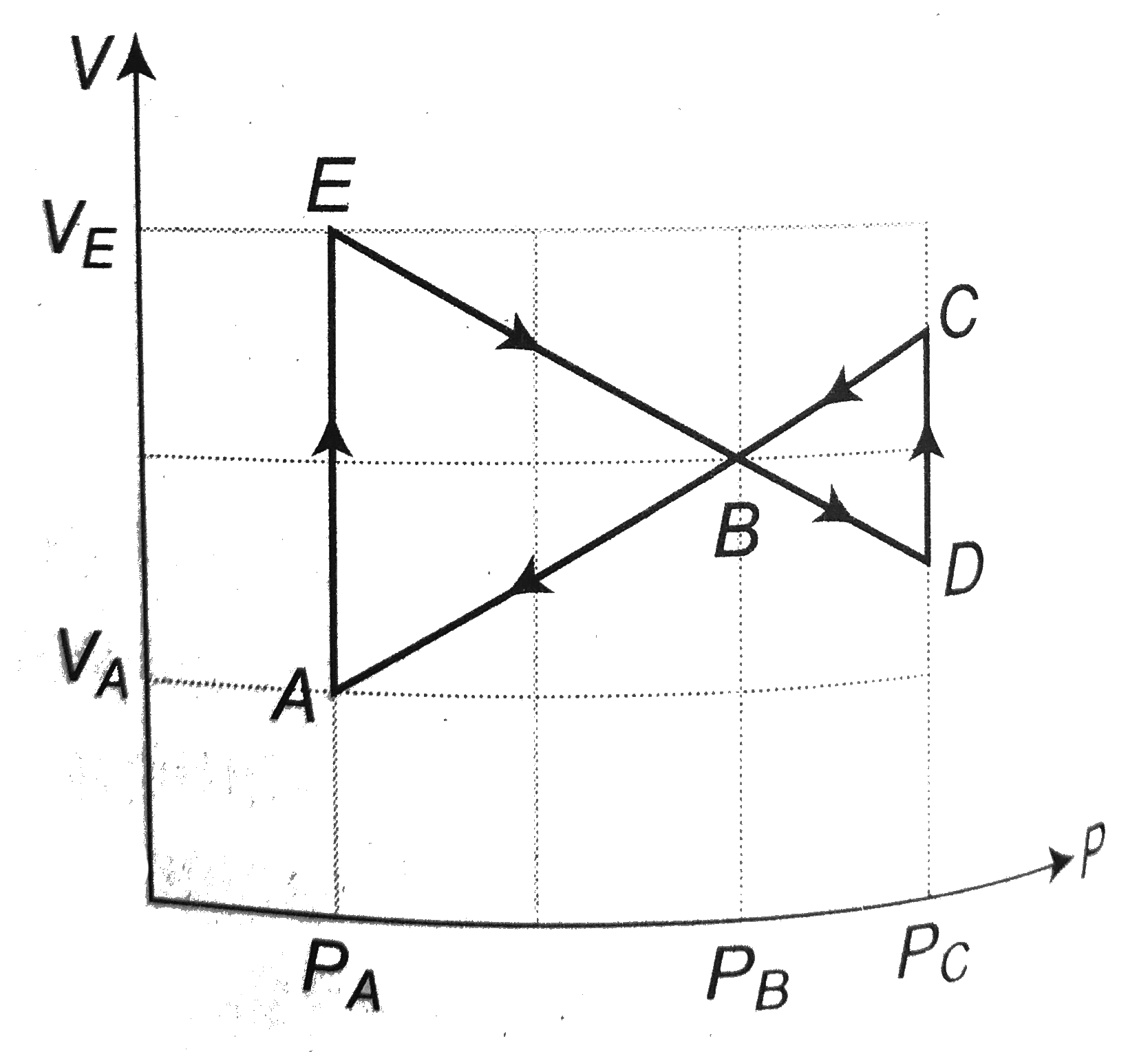
2.67kJ
1.33kJ
3.45kJ
4.25kJ
The correct Answer is:A
The complete cyclic process can be visualized made up of tow cycles, ie., cycle AEBA (clockwise) and cycle BDCB (counter-clockwise).
Work done by the gas during the cycle AEBA should be positive
W1 = area of the loop in the P−V diagram.
12(base)(altitude)=12(VE−VA)(PB−PA)
12(20×10−3m3)(5−2)×105Nm−2=3kJ
Done by the gas the cycle BDCB should negative.
W2=−areaofl∞pBDCB
Now evidently traingale ABE and BCD are similar, the corresponding angles being equal (i.e.
∠EBA=∠DBC=∠EAB=∠BCD
(VE−VA)(PB−PA)=(VC−VD)(PC−PB)⇒20(5−2)=(VC−VD)(6−5)
⇒(VC−VD)=20litre
W2=−12×203×10−3×1×105=−0.33kJ
∴ Total work done by the gas
ΔW=W1+W2=3kJ−0.33kJ=2.67kJ.
Topper's Solved these Questions
- KINETIC THEORY OF GASES AND THERMODYNAMICSBook:A2ZChapter:KINETIC THEORY OF GASES AND THERMODYNAMICSExercise:Assertion Reasoning
Explore 15 Videos
- KINETIC THEORY OF GASES AND THERMODYNAMICSBook:A2ZChapter:KINETIC THEORY OF GASES AND THERMODYNAMICSExercise:NEET Questions
Explore 55 Videos
- KINETIC THEORY OF GASES AND THERMODYNAMICSBook:A2ZChapter:KINETIC THEORY OF GASES AND THERMODYNAMICSExercise:Second Law Of Thermodynamics
Explore 29 Videos
- GRAVITATIONBook:A2ZChapter:GRAVITATIONExercise:Chapter Test
Explore 29 Videos
- MOCK TESTBook:A2ZChapter:MOCK TESTExercise:Motion With Constant Acceleration
Explore 15 Videos
Similar Questions
For the thermodynamic process shown in the figure.
PA=1×105Pa,PB=0.3×105Pa
PD=0.6×105Pa,VA=0.20litre
VD=1.30 litre.
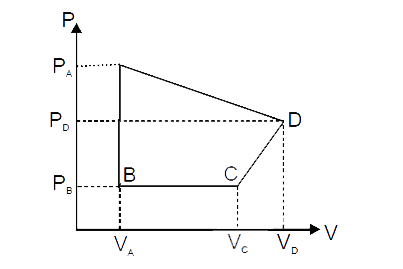
(a) Find the work performed by the system along path AD.
(b) In the total work done by the system along the path ADC is 85 J find the volume a point C.
(c) How much work is perfomed by the system along the path CDA ?
View SolutionIn a cyclic process ABCA then process BC is isothermal. Find work done by gas in cycle ABCA (Given P1=P)

View Solution
Knowledge Check
An ideal gas is transformed from state A(P1,V1) to the state B(P2,V2) through path AB. In this process the work done by the gas is
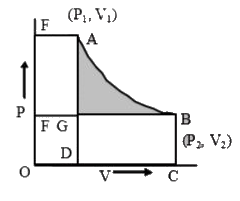 AW = area ABCDABW = area ABEFACW = area ABGADW = area ABCOFA
AW = area ABCDABW = area ABEFACW = area ABGADW = area ABCOFAIn the figure shown below, an ideal gas is carried around the cyclic process. How much work is done in one cycle if P0=8atmandV0=7.00 litre?
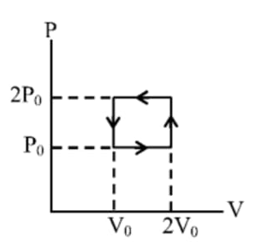 A5656 JB−5656JC10600JD11300J
A5656 JB−5656JC10600JD11300JThe apparatus shown consists of three bulbs connected by stopcocks of negligible volume . The temperature is constant .
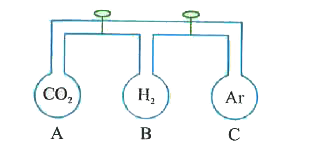
PA=2.13atm PB=0.861atm
PC=1.15atm VA=1.50 L
VB=1.0L VC=2.0 L
When all the stopcocks are opened , the pressure in the bulb 'B' will beA1.41 atmB0.861 atmC1.38 at mD1.18 atm
A cyclic process 1-2-3-1 , performed on an ideal gas is depicted in the given V-T diagam show the same process on a P-V diagram and indicate the stages when the gas receives and rejects heat .
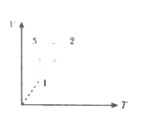
View SolutionP – V graph for a cyclic process is shown in figure . Work done is given by
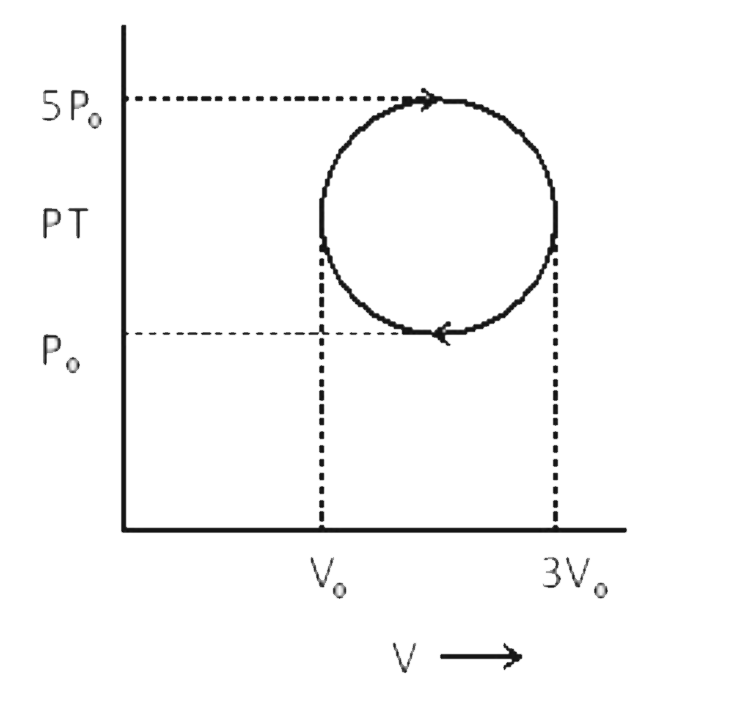
View SolutionA sample of a gas in a cylinder expands 20.51 against 0.6 atm pressure. The work done by the gas is :
View Solution10 litre of an ideal gas at 25 atm and 27∘C is expanded isothermally to 1 atm against a constant external pressure of 760 torr. Calualate work done by the gas in litre-atm:
View SolutionIf 1.5 L of an ideal gas at a apressure of 20 atm expands isothermally and reversibly to a final volume of 15 L, the work done by the gas in L atm is:
View Solution